Learn the best practices for storing ginger, fresh and flavorful, for longer with simple tips and tricks.
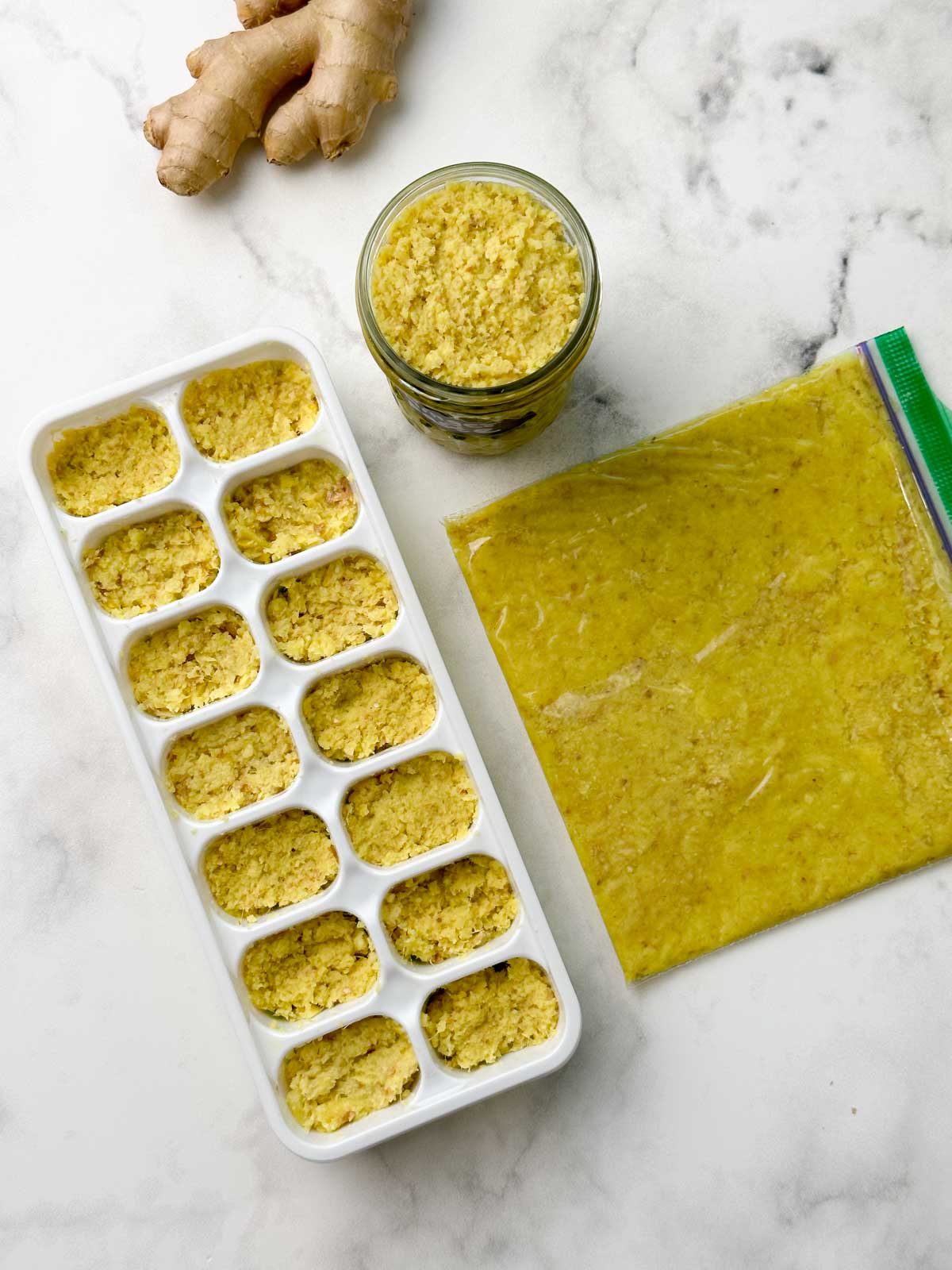
My parents and grandparents have recommended ginger tea or ginger water for all of our health issues for a very long time. Ginger is a beneficial herb, helping with anything from nausea to the flu and other illnesses. In addition to being healthy, ginger is an excellent method to enhance the flavor of our meals.
This amazing ingredient is adaptable and works well in various dishes, including simple bowls of dal, curries, pulao, and more. We are here to assist you in understanding ginger and its usage in multiple recipes if you are still getting familiar with them. For more information about ginger, continue reading.
Jump to:
What Is Ginger?
Ginger, also known as Zingiber officinale, is a perennial herb that is indigenous to China and India. It is a stem that develops underground in tuberous joints. The most widely used part of the ginger plant, the rhizome or stem, is what is usually used as a spice.
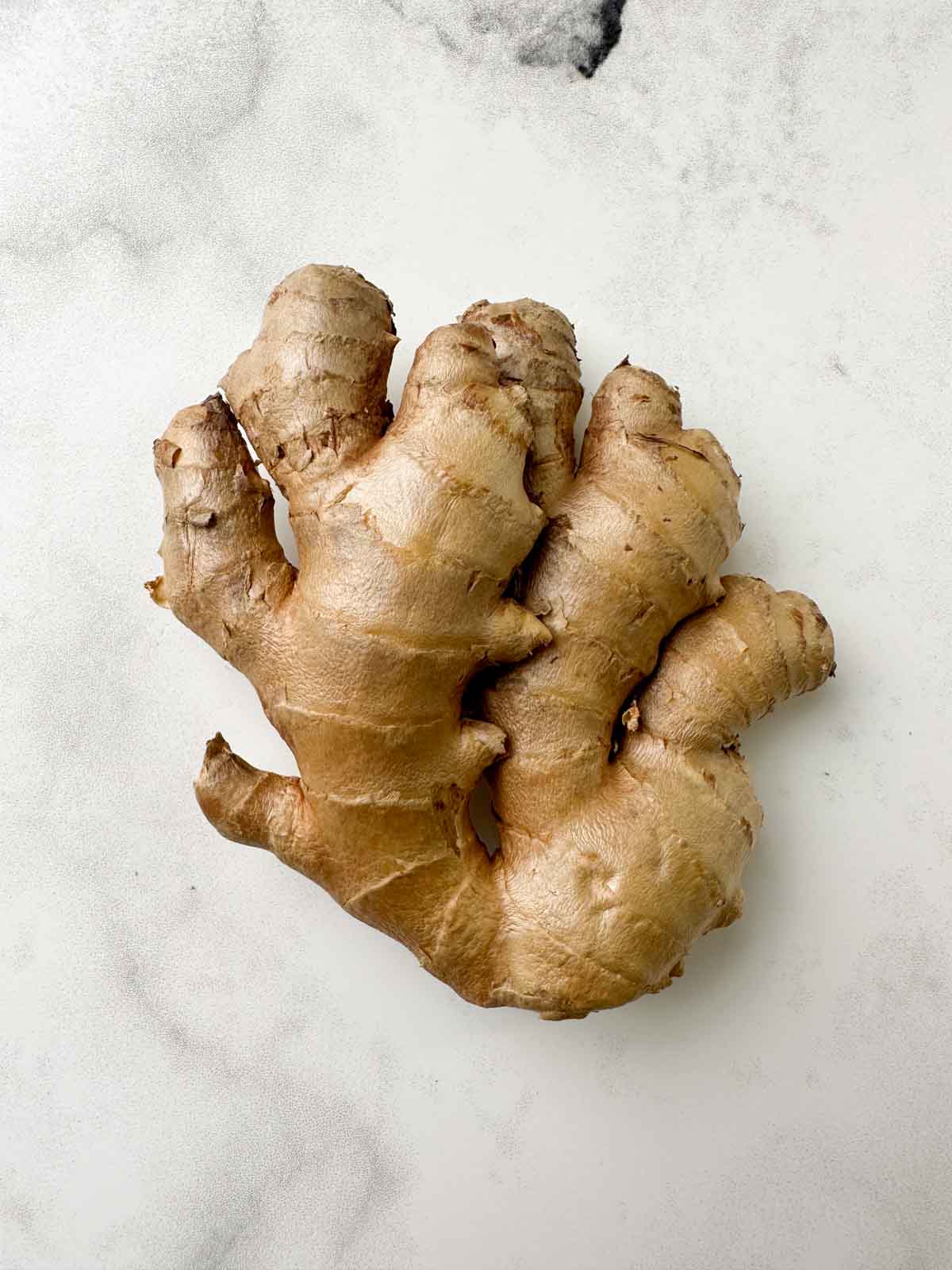
How to Use Ginger - What Does it Taste Like?
Fresh ginger that has been peeled and grated or minced is a common ingredient in recipes. Several recipes ask for juice, which can be made by shredding ginger in a towel and extracting the juice from it.
When it comes to flavor, ginger has a pungent aroma and taste. It provides a smoky, spicy flavor that delivers a distinct and calming impact.
Health Benefits of Ginger
- Helps In Nausea: According to studies, ginger helps improve the digestive system's response and speed up stomach emptying, which reduces nausea.
- Combat Infections: Fresh ginger contains a bioactive substance called gingerol that may help lower the risk of infections.
- Fights Inflammation: Ginger is a great treatment for the flu, headaches, and menstruation cramps because it contains volatile oils that have anti-inflammatory qualities. It may also reduce the need for medicines for osteoarthritis.
How to Buy - Tips & Tricks
Do you know the correct way to purchase ginger? While they are simple to eat, there are several things you need to check for when purchasing. Thus, the following advice will help you select the right ginger bits.
- Pick Thin-Skinned Ginger
Ginger with lustrous, taut skin is ideal. Never have thick, fibrous ginger skin; it should always be thin. You should have no trouble using your nail to make a small nick in the skin.
- The Lesser, The Better
Limiting the number of knobs on the ginger is also a good idea. It is preferable to have less. You do not need to purchase the entire ginger as a single unit. Just break off what you require to achieve the desired amount.
- Check For The Smell
The last trick is to smell the ginger pieces. Make sure each piece has a strong and pungent aroma.
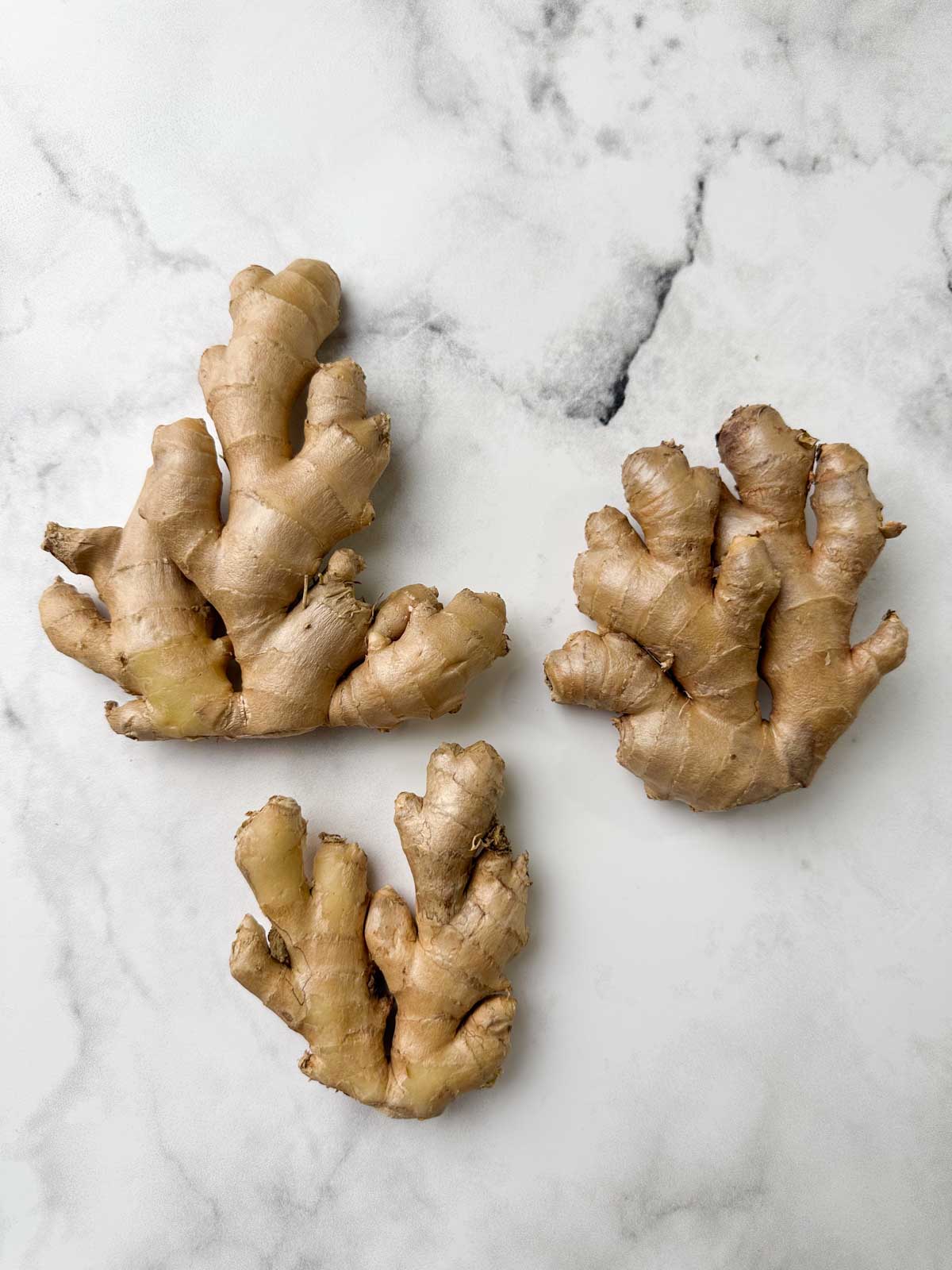
How to Store Fresh Ginger?
Here are some quick methods for storing ginger on the kitchen counter or pantry, in the fridge or in the freezer and extending its shelf life:
As soon as you get fresh ginger roots from the grocery, wash them under running water, and pat them dry using a kitchen towel.
Storing Ginger Root
Kitchen Counter or Pantry: If you're going to use fresh ginger within a few days, then store the entire ginger root, in a cool, dry, and well-ventilated cabinet or on the kitchen counter, away from sunlight and moisture. For longer storage, store it in the fridge or freezer.
Refrigerator: Place the ginger root on a paper towel-lined in an airtight container. The paper towel will help absorb any excess moisture and maintain the ginger's freshness. Place it in the crisper drawer in your refrigerator. It can stay fresh for up to 2-3 weeks when stored correctly.
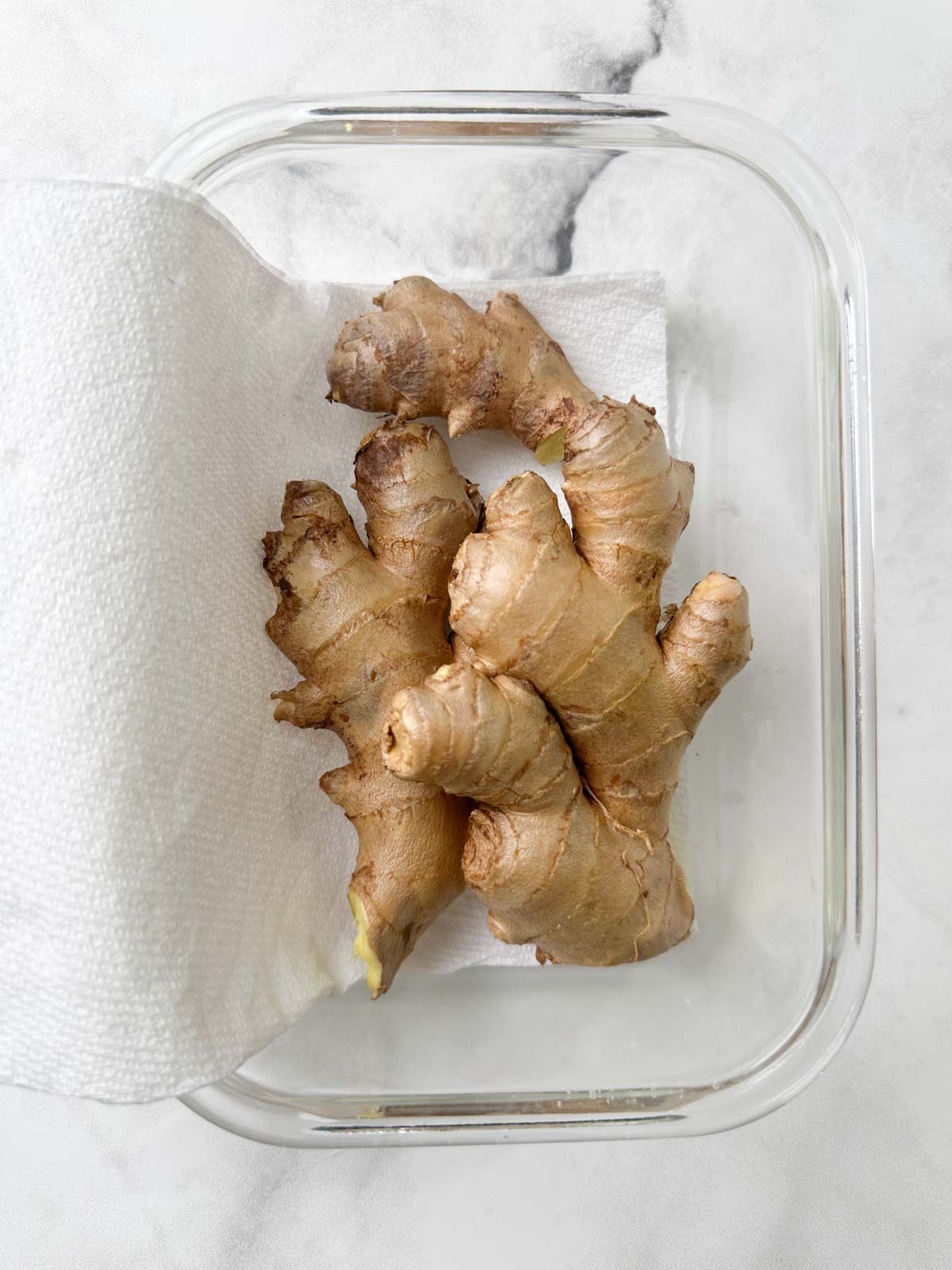
Freezer: Freezing the ginger root is an alternative method to extend its shelf life. Put the ginger root in a freezer-safe bag or container and store it in the freezer for up to 3-4 months.
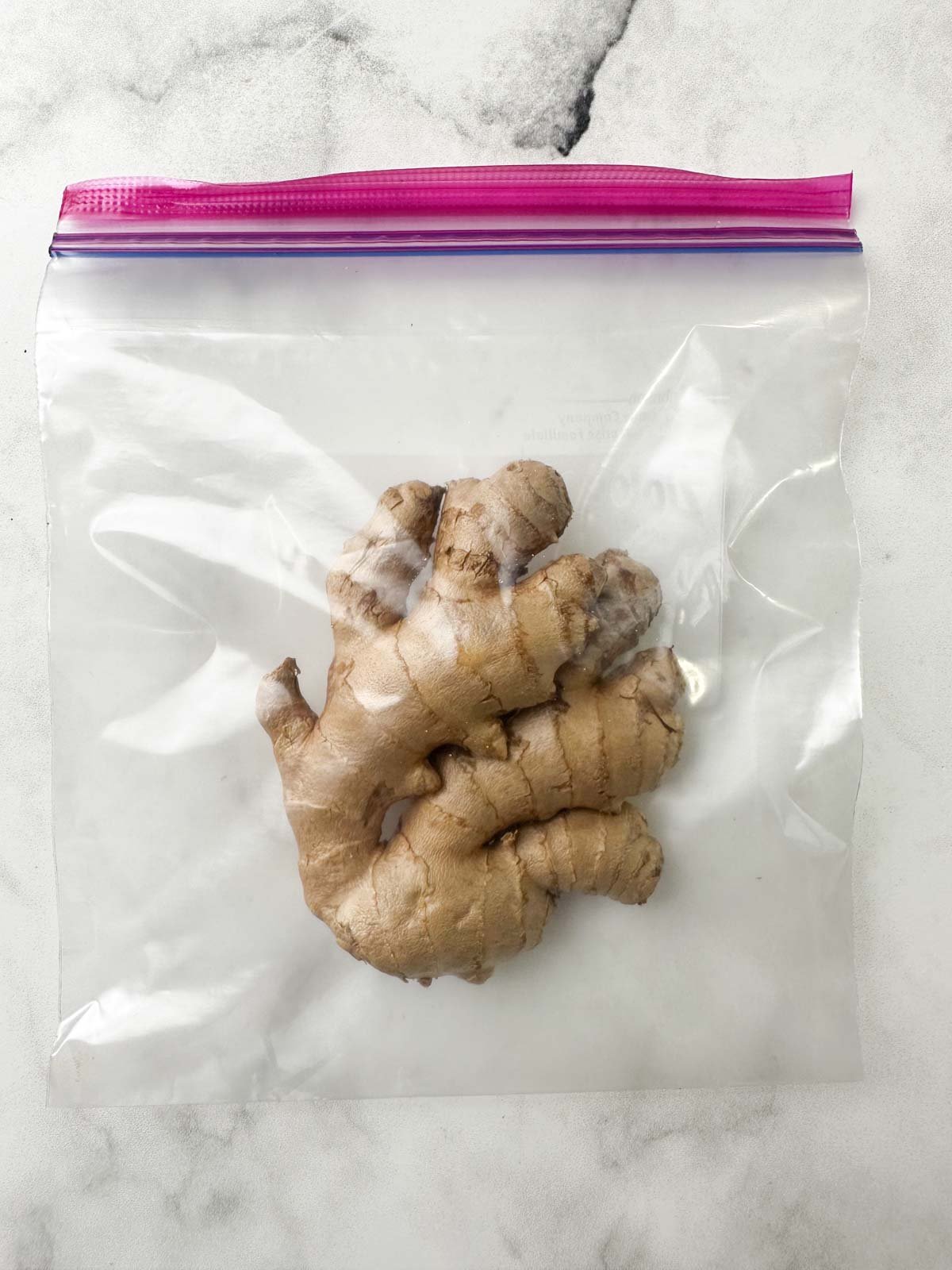
Storing Ginger Slices
Peel and slice the ginger into your desired size and transfer it to an airtight container or a resealable ziplock bag.
Store it in the vegetable drawer, it will last for a week. If you want to store it for longer, place the ziplock bag or container in the freezer. Use them directly from the frozen state in your recipe.
This is a convenient method to prepare in advance when you want to use them in soup, infused drinks like ginger lemon tea, baked goods, and curries. You can also finely chop or mince the ginger slices before using them in the recipes.
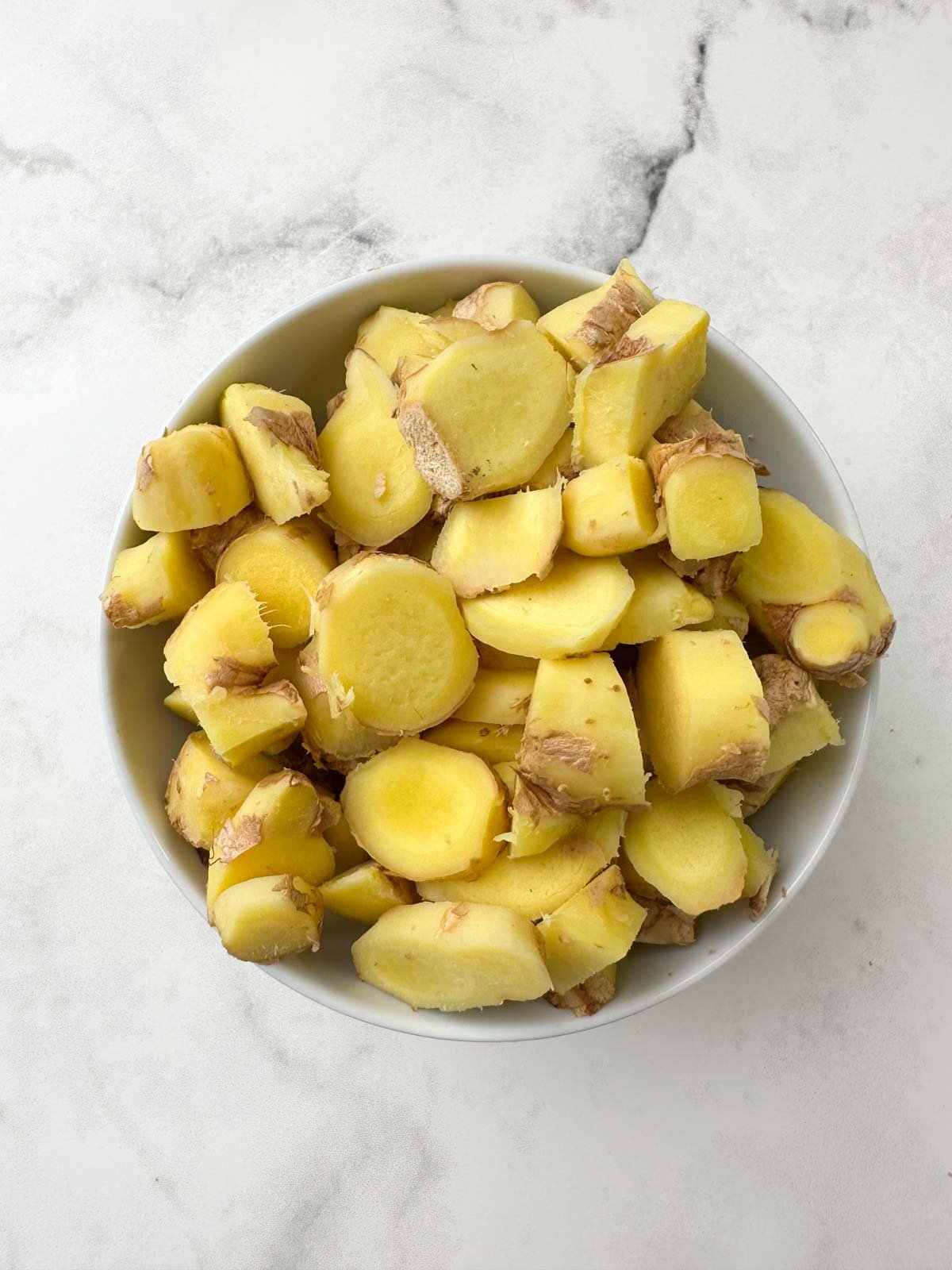
Storing Ginger Paste
Ginger paste is one of the best ways to store ginger.
To make Ginger Paste:
Peel the ginger using a spoon or vegetable peeler. Also, remove the bruised part, if any. Roughly chop the ginger into 1-inch pieces.
Add the chopped ginger, to the blender or food processor. If desired, add oil and a little salt while blending. There is enough water/moisture content in ginger, so do not add water while blending.
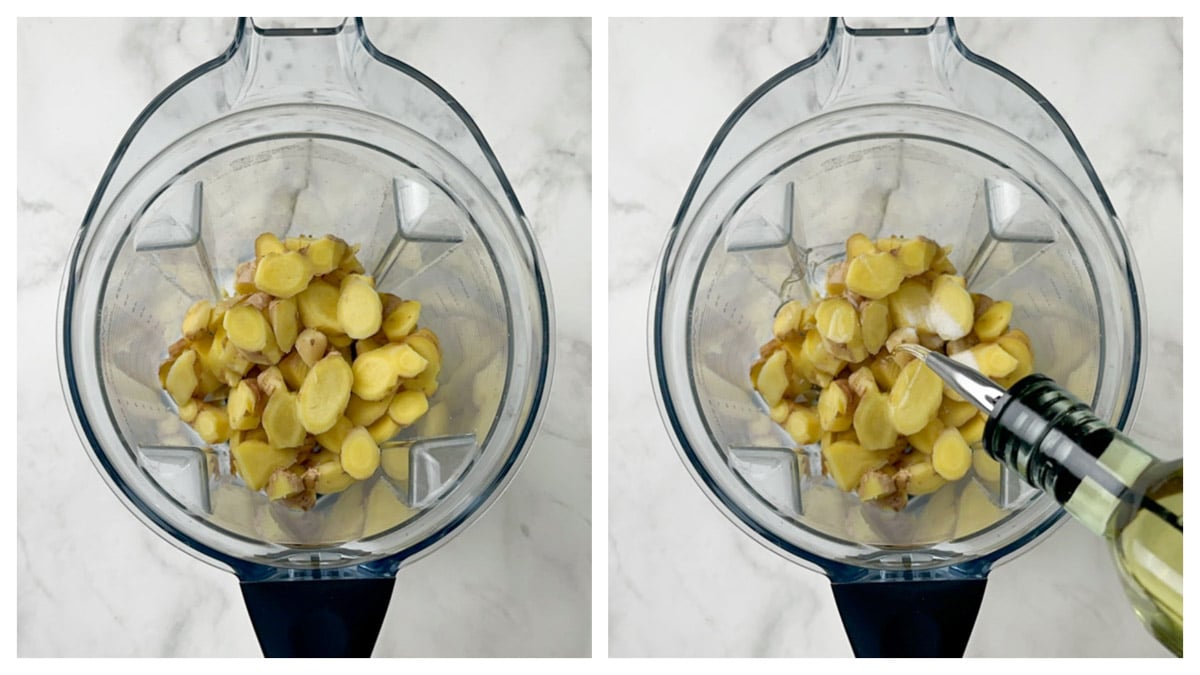
Blend the ingredients until you get your desired consistency (smooth or coarse paste). Make sure to scrape down the sides of the blender at least once in between.
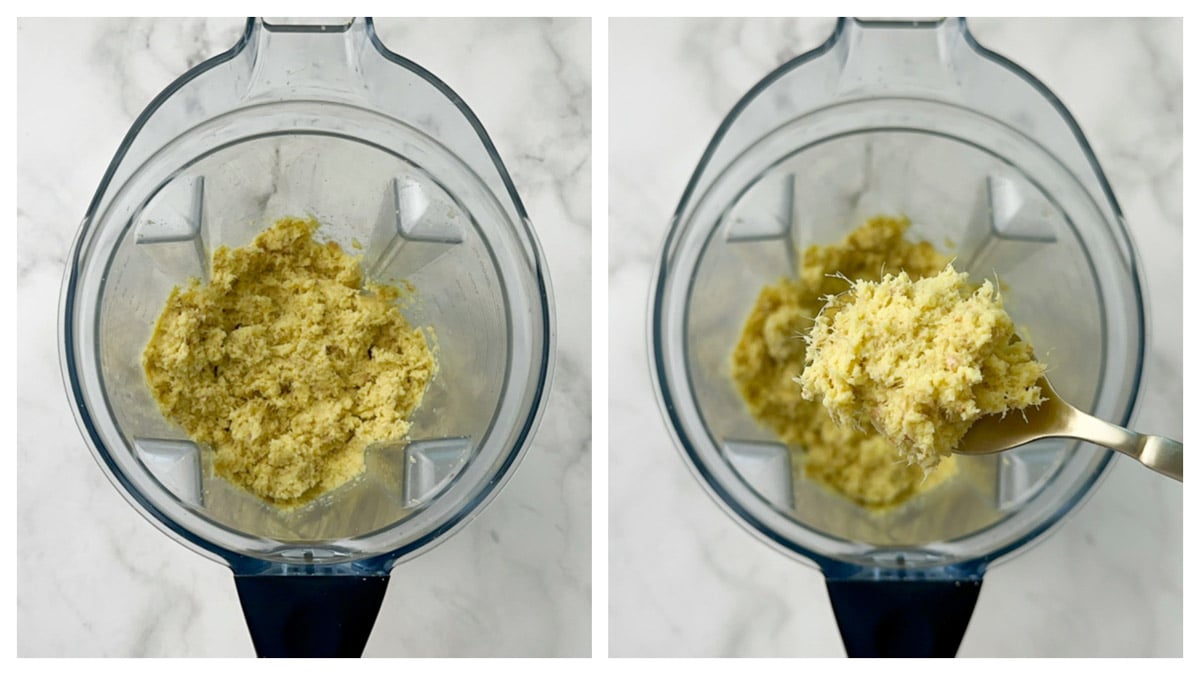
Fridge: Once the ginger paste is ready, You can store it in an airtight glass container in the refrigerator for up to 1 week.
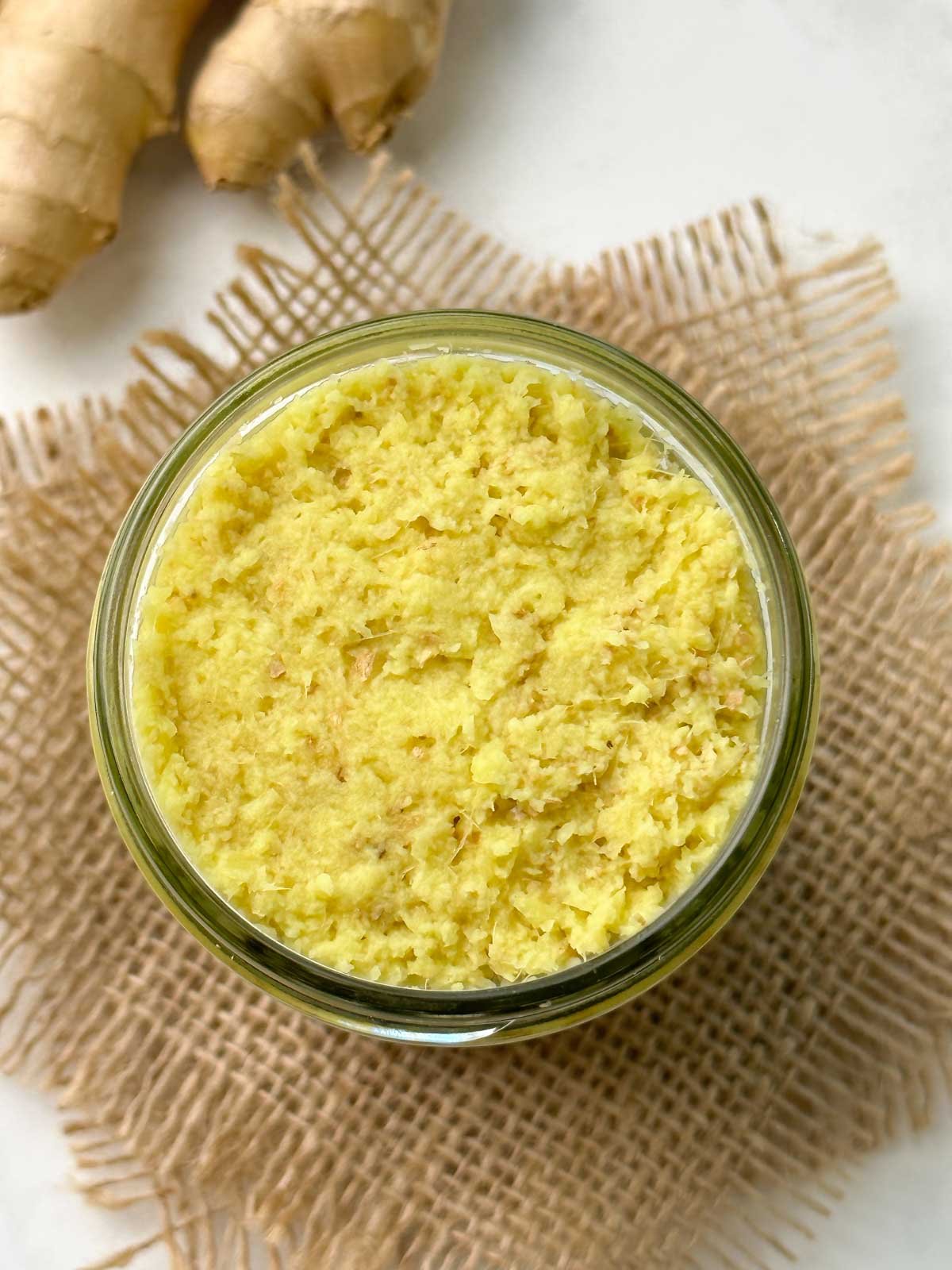
Ice cube tray: Put a little ginger paste in a silicone ice cube tray and freeze for approximately 2 hours or until hard. Then transfer the frozen cubes to a freezer-safe ziplock storage bag, label the date, seal it tightly before freezing, and freeze for up to 3 months. Take each cube out when required.
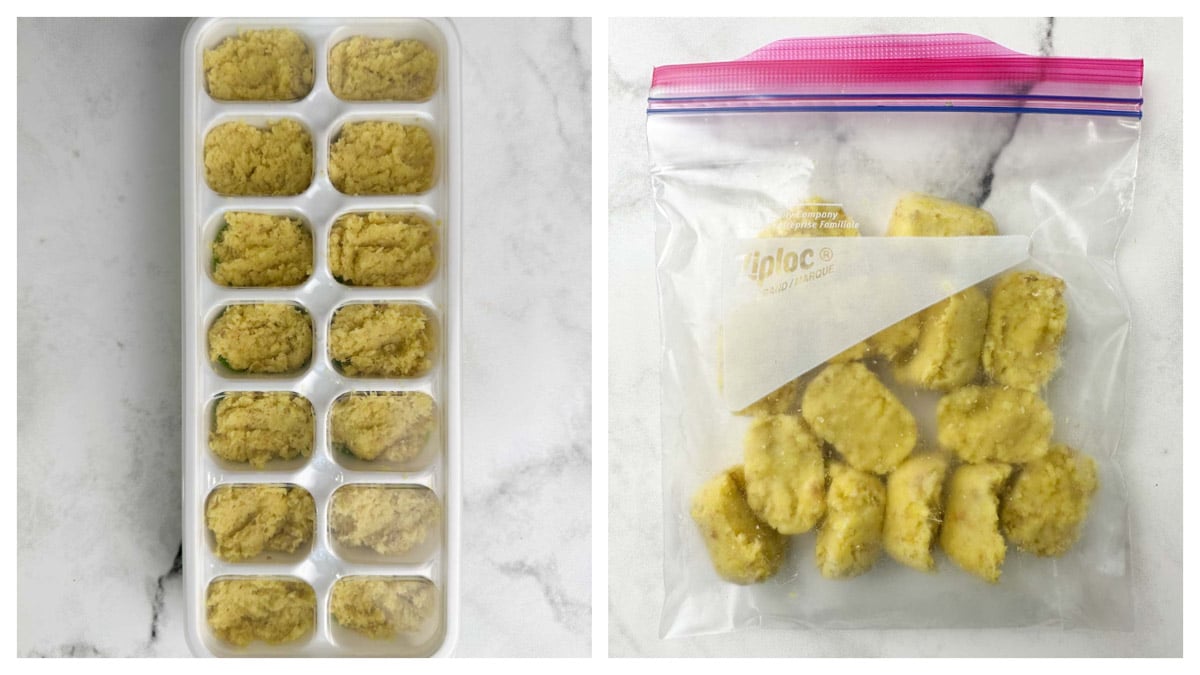
Ziplock freezer bag: Transfer the paste to a ziplock freezer bag, spread it thinly, and ensure to push out all the air. Label the date and store it in the freezer. Break it into small pieces and store it back in the freezer.
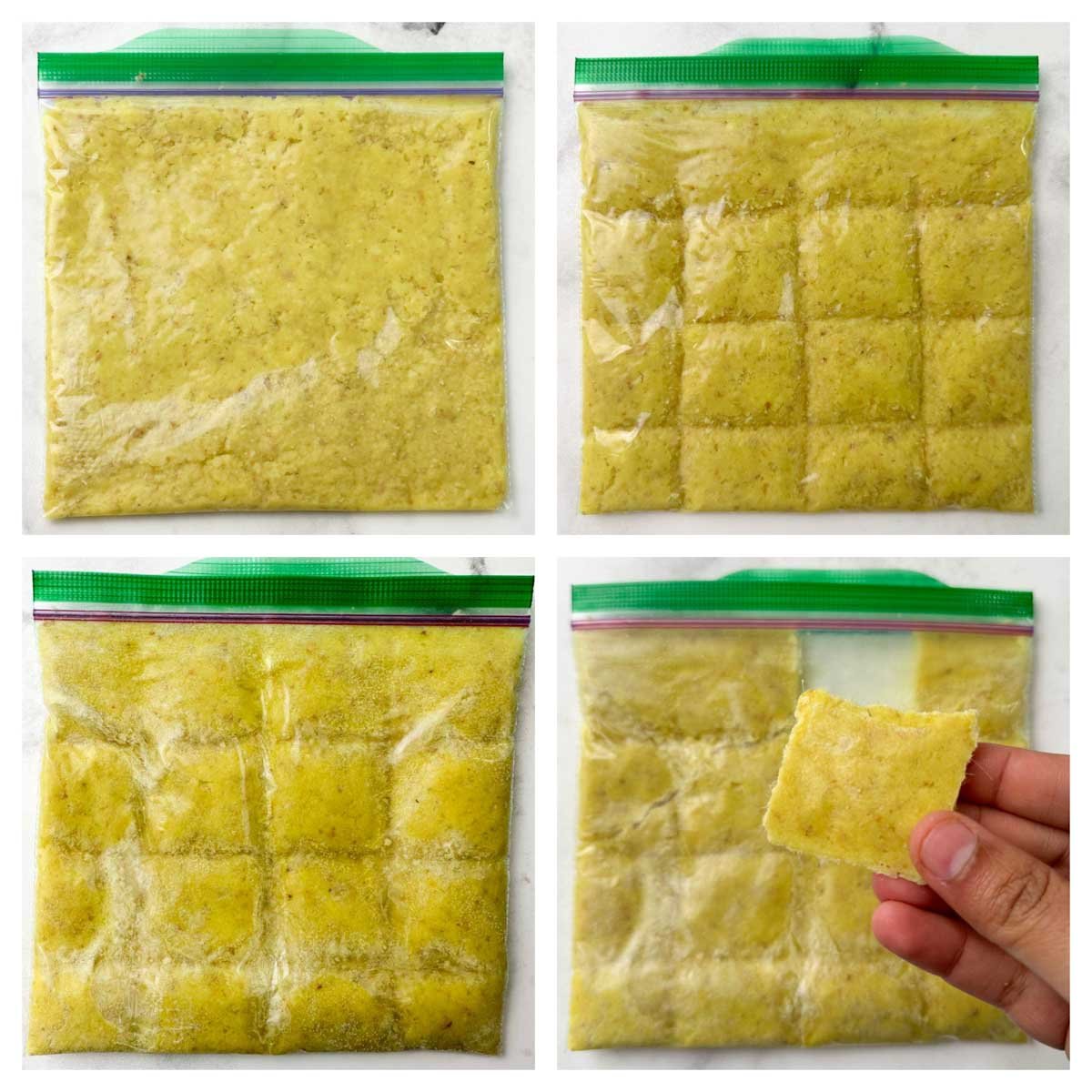
Where To Buy Ginger?
It is simple to find organic ginger in big supermarkets like Costco, Whole Foods, Trader Joe's, Safeway, and Indian grocery stores.
Frequently Asked Questions
Peeling fresh ginger is a personal preference. It is not essential if the ginger is organic; However, you can just scrape off the outer layer using a spoon or vegetable peeler to remove any potential dirt or residues. It is highly recommended to wash the ginger thoroughly before using it.
When properly stored, the unpeeled ginger root can be kept in the refrigerator for up to one month. The peeled ginger root can be stored in the refrigerator for up to a few weeks.
A whole Ginger knob that hasn't been peeled can be kept at room temperature. Make sure to choose a cool and dry place to store it. Place it in a mesh bag or paper bag as it helps with air circulation and prevents moisture buildup.
The answer is yes, you can freeze the entire ginger. Wash and dry the ginger root if you're short on time or just like entire chunks of ginger. Put it in a freezer-safe bag or container.
There is no need to defrost frozen ginger because it is much simpler to peel and grate than fresh ginger.
More Cooking 101 Recipes
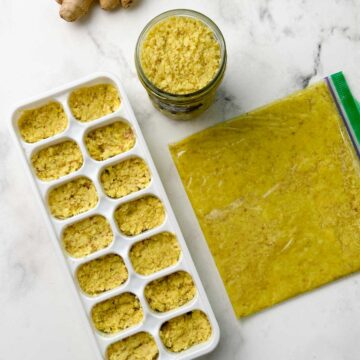
How to Store Ginger
Equipment
Ingredients
- 1 pound fresh ginger root
Instructions
Cleaning Ginger
- As soon as you get fresh ginger root from the grocery, wash them under running water and pat dry using a kitchen towel.
Storing Ginger Root
- Kitchen Counter or Pantry: If you're going to use fresh ginger within few days, then store the entire ginger root, in a cool, dry, and well-ventilated cabinet or on kitchen counter, away from sunlight and moisture. For longer storage, store it in fridge or freezer.
- Refrigerator: Place the ginger root on a paper towel lined in an airtight container. The paper towel will help absorb any excess moisture and maintain the ginger's freshness. ss moisture. Place it in the crisper drawer in your refrigerator. It can stay fresh upto 2-3 weeks when stored correctly.
- Freezer: Freezing the ginger root is an alter method to extend its shelf life. Put the ginger root in a freezer-safe bag or container and store it in the freezer for up to 3-4 months.
Storing Ginger Slices
- Peel and slice the ginger into your desired size and transfer them to an airtight container or a resealable ziplock bag.
- Store it in the vegetable drawer, it will last for a week. If you want to store for longer, place the ziplock bag or container in the freezer. Use them directly from the frozen state in your recipe.
- This is a convenient method to prepare in advance, when you want to use them in soup, infused drinks like ginger lemon tea, bakes goods, and curries. You can also finely chop or mince the ginger slices before using them in the recipes.
Storing Ginger Paste
- To make Ginger Paste:Peel the ginger using a spoon or vegetable peeler. Also, remove the bruised part if any. Roughly chop the ginger into 1-inch pieces.Add the chopped ginger, to the blender or food processor. If desired add oil and little salt while blending. There is enough water/moisture content in ginger, so do not add water while blending.
- Blend the ingredients until you get your desired consistency (smooth or coarse paste). Make sure to scrape down the sides of the blender at least once in between.
- Fridge: Once the ginger paste is ready, You can store it in an airtight glass container in the refrigerator for up to 1 week.
- Ice cube tray: Put a little ginger paste in a silicone ice cube tray and freeze for approximately 2 hours or until hard. Then transfer the frozen cubes to a freezer-safe ziplock storage bag, label the date, seal it tightly before freezing, and freeze for up to 3 months. Take each cube out when required.
- Ziplock freezer bag: Transfer the paste to a ziplock freezer bag and spread it thinly, and ensure to push out all the air. Label the date and store it in the freezer. Break it into small pieces and store it back in the freezer.
Nutrition
★ Like this recipe? FOLLOW ME on Facebook, Instagram, Pinterest, and Youtube for more quick & easy recipes.

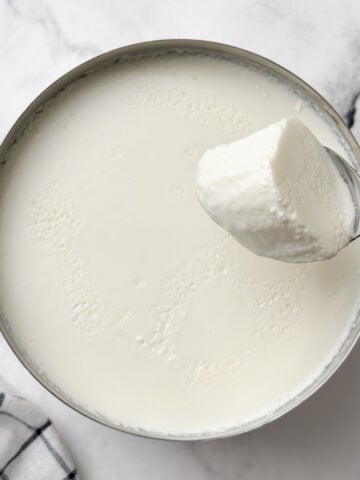
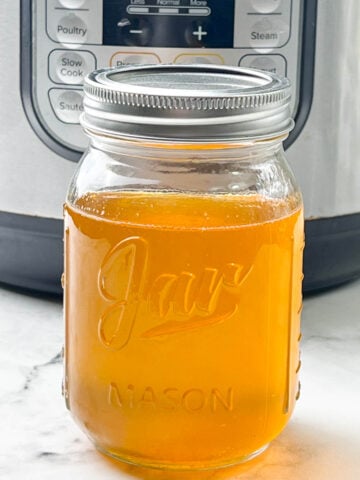
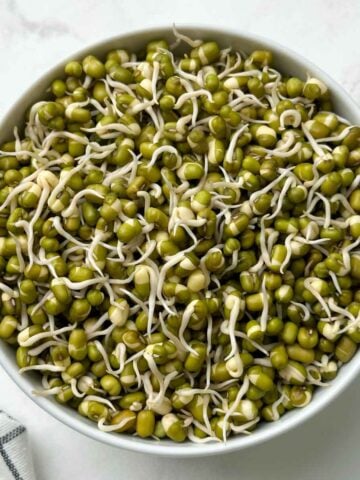
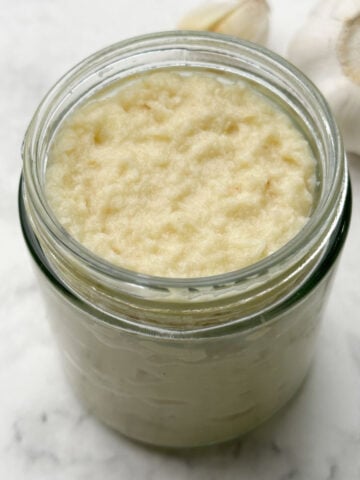
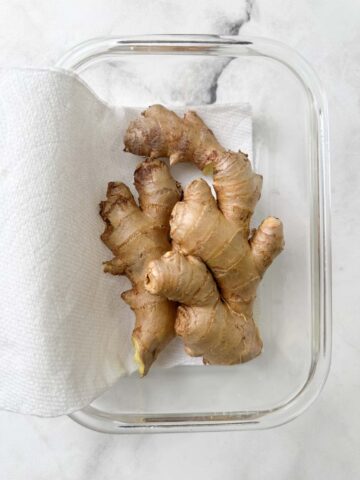
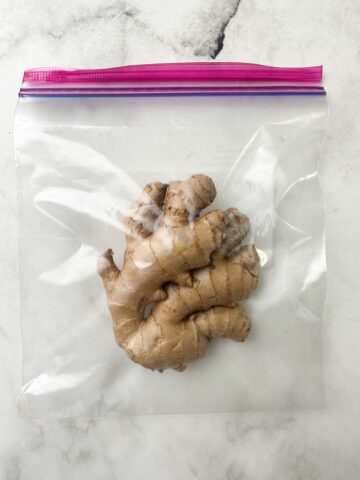
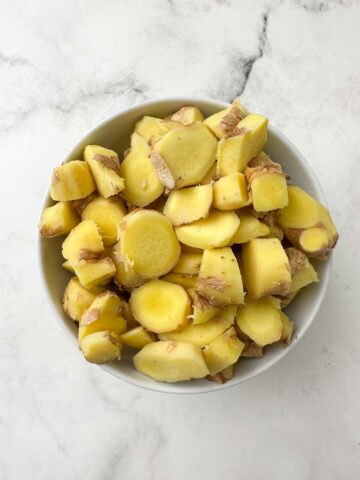
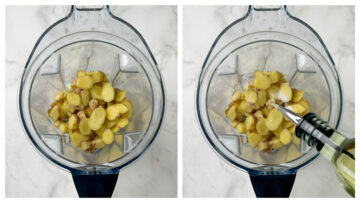
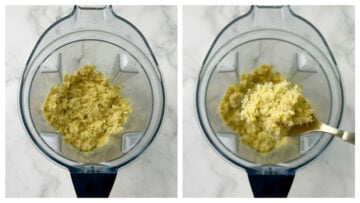
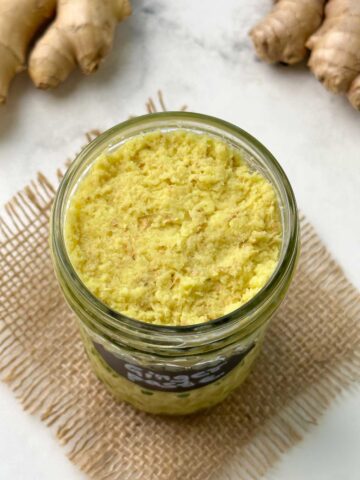
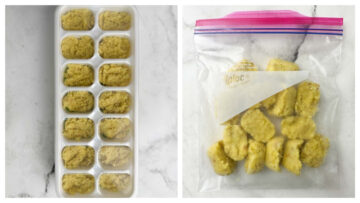
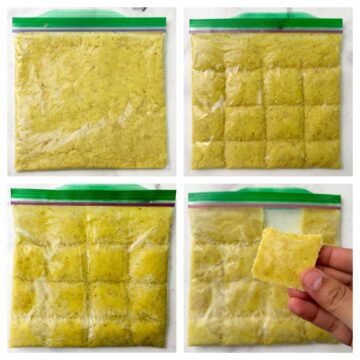
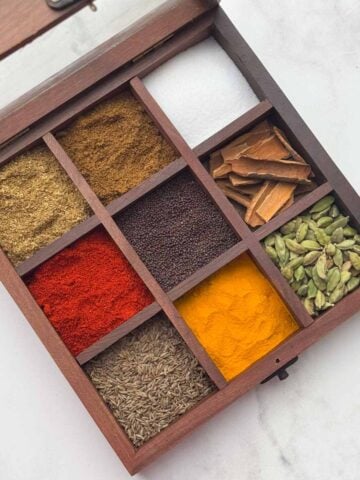
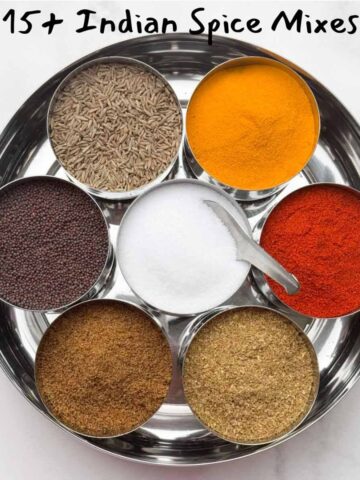
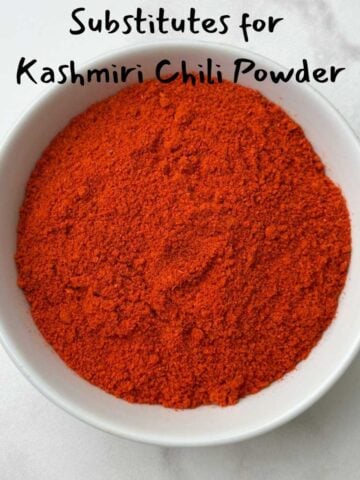
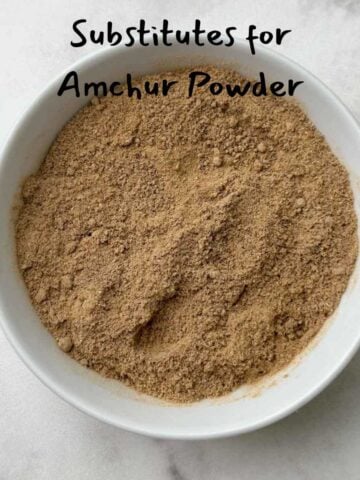
Leave a Reply